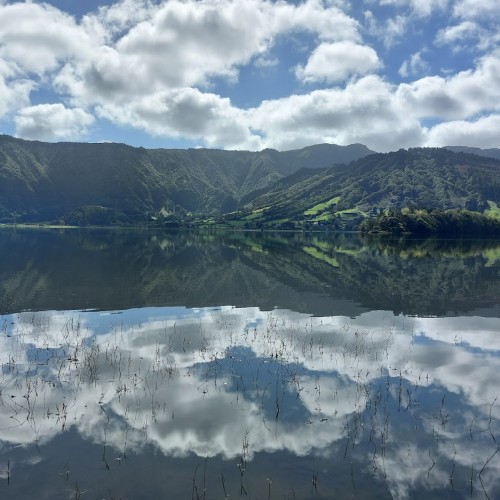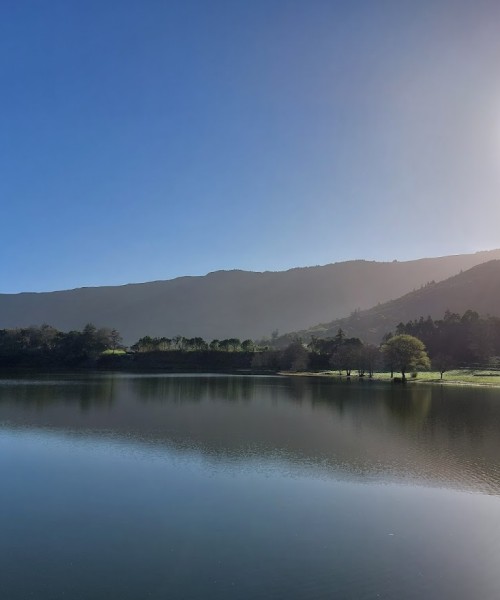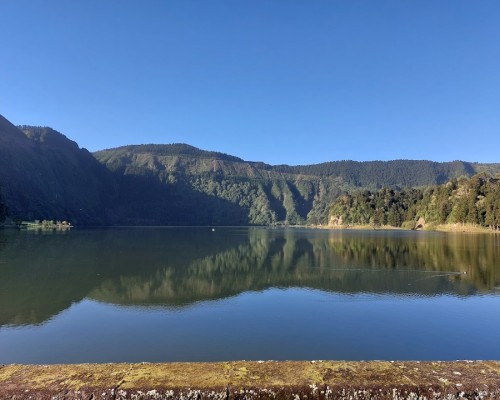Sete Cidades is a Portuguese parish in the municipality of Ponta Delgada, Autonomous Region of the Azores, with an area of 19.22 km², which has a population of around 800 inhabitants (2011 census), known for their hospitality that attracts a lot of visitors.
It is located at latitude 37.87 north and longitude 25.78 west, at an altitude of around 260 meters inside the caldera of the Sete Cidades volcano, on the eastern shore of the lake of the same name.
The name of the parish has roots in the legendary Sete Cidades do Atlântico. Despite the lack of proven contacts with the so-called “island of the Seven Cities”, the belief in its existence gave rise to one of the most widespread legends of the European Middle Ages, with multiple reports of fortuitous visual records and expeditions organized to find it.
Located on the flat part of the shore of Lagoa Azul, the parish preserves traditional houses, some still with tall grain.
In architectural terms, the Church of São Nicolau, in neo-Gothic style, inaugurated in 1852, the house of the heirs of Caetano de Andrade, and the discharge tunnel of the lagoon, inaugurated in 1937, stand out.
Lagoa das Sete Cidades is located at the top of the Sete Cidades caldeira, formed by successive collapses of stones and boulders, with an area of approximately 4.3 km, maximum depth of 29 meters. It constitutes one of the largest abatement boilers in the world. It is part of a mountainous area of very sharp relief, with interior cliffs, deep ravines and gullies, and furrows in which water flows. The zone includes an urban area, agricultural land and massive forests producing cryptomeria.


